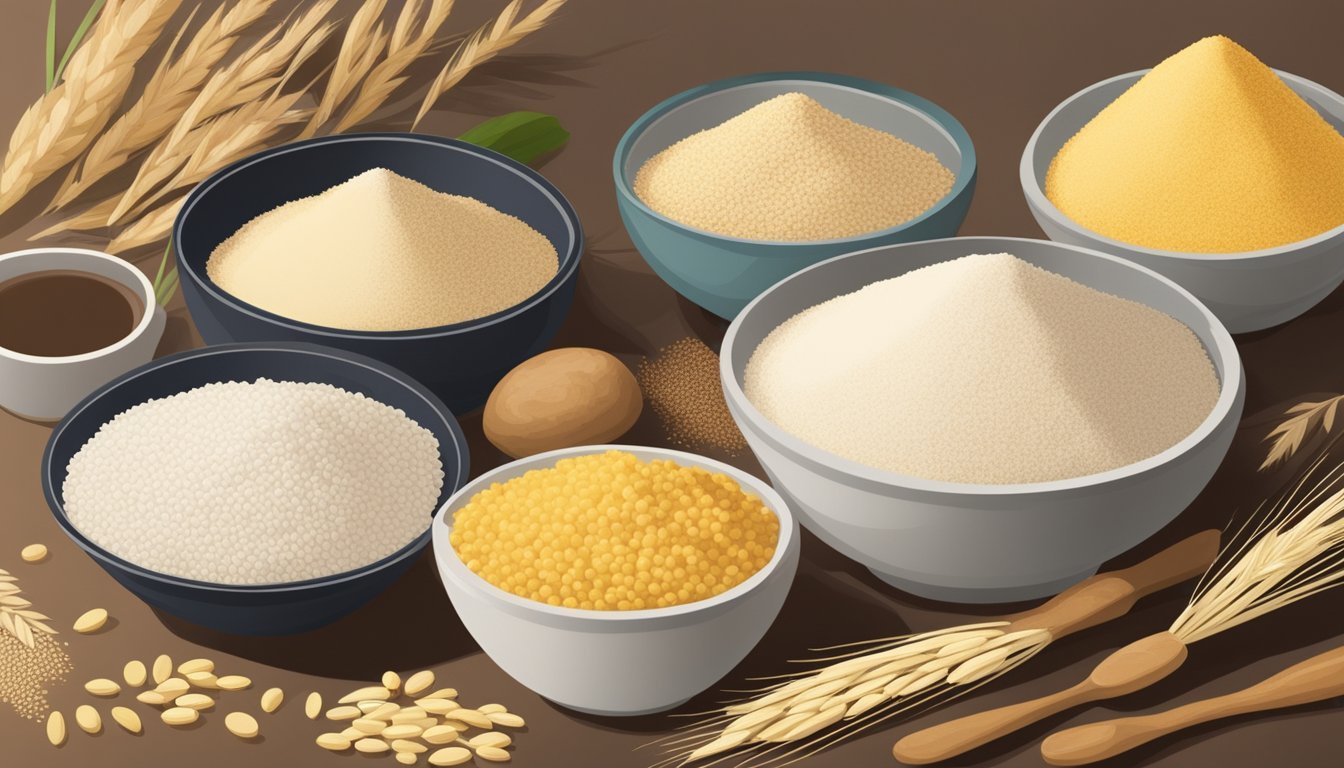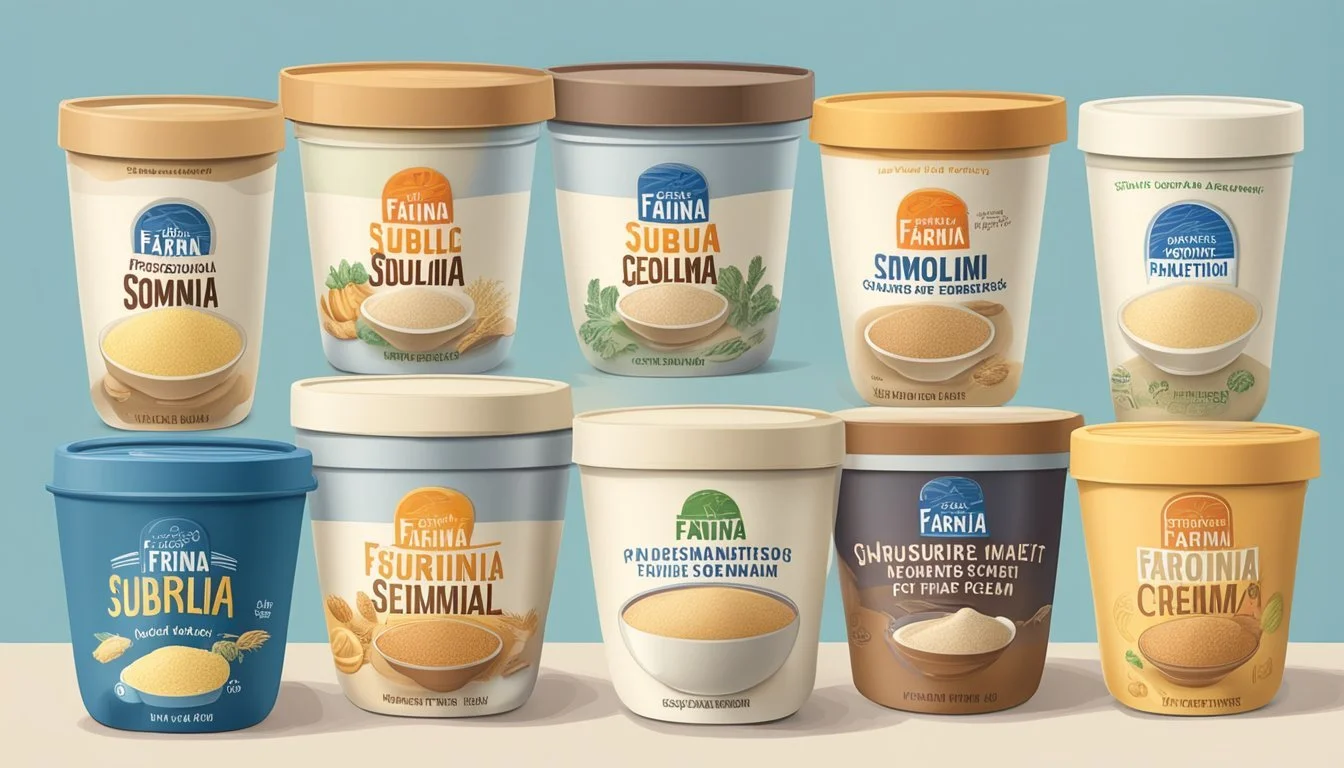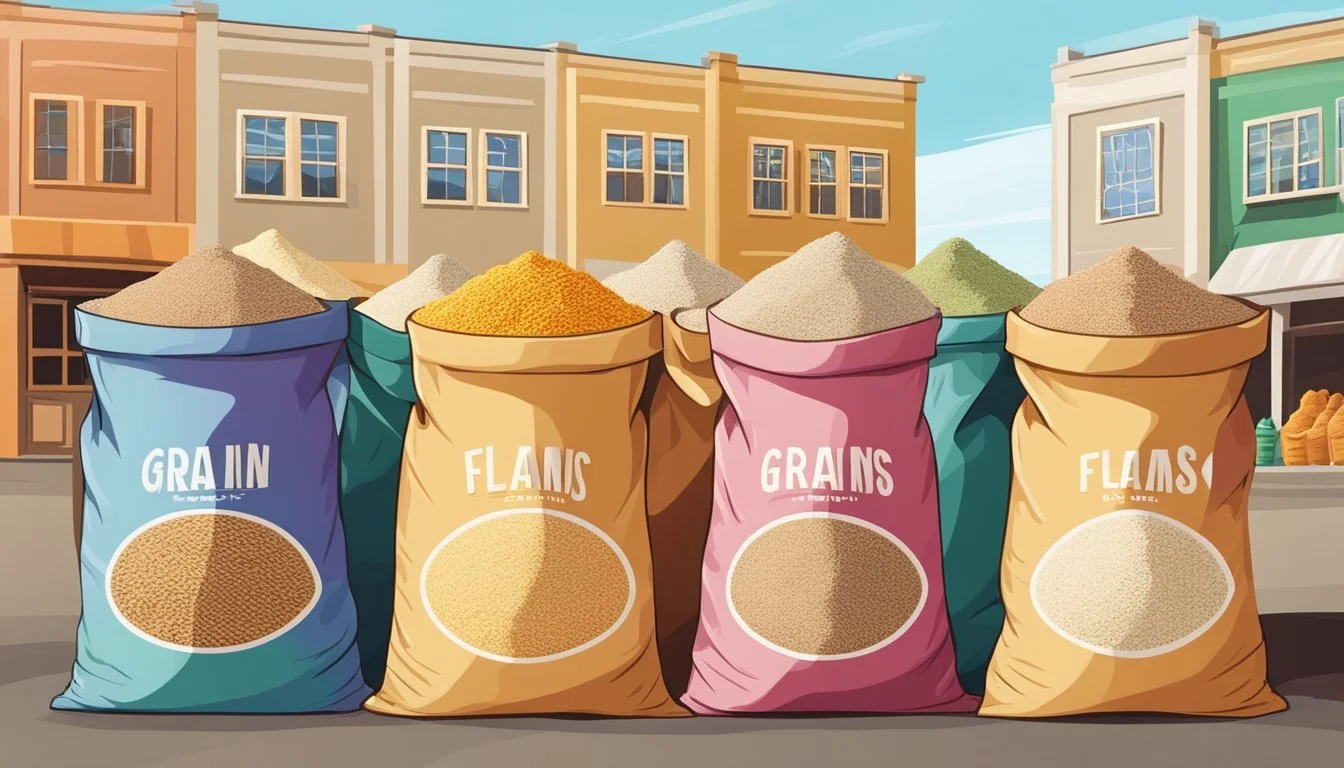Farina Substitutes
Best Alternatives for Baking and Cooking
When cooking or baking, finding substitutes for specific ingredients can be a game changer, especially for something as frequently used as farina. Farina, a type of milled wheat, is a staple in many kitchens, often enjoyed as a warm breakfast cereal. It's nutritious and versatile but can be hard to find sometimes. Luckily, several alternatives can successfully replace farina without compromising the flavor or texture of your dish.
One of the top substitutes for farina is oatmeal, which is beloved for its nutty flavor and slightly chewy texture. Rich in fiber and nutrients, oatmeal matches farina's creamy consistency when cooked with water or milk, making it an excellent and healthy substitute. Buckwheat, cornmeal, and semolina are also viable options that bring unique flavors and textures, providing variety and adaptability in recipes.
Cornmeal, in particular, stands out due to its mildly sweet and nutty flavor. It's often used in baking and can be mixed with flour to match the texture of farina. Choosing the right substitute allows the flexibility to maintain the desired outcome of your dish, whether it's a cozy breakfast cereal or an ingredient in a more complex recipe.
Understanding Farina
Farina is a versatile ingredient derived from wheat, known for its fine texture and nutritional benefits. Common in hot cereals and baked goods, it provides a significant source of nutrients.
What Is Farina
Farina is a type of milled wheat product, often used in making hot cereal. Made by grinding the wheat kernel's endosperm, Farina possesses a fine and grainy texture. This product has been a staple in many cultures due to its ability to absorb flavors and create a smooth, comforting porridge. Its mild taste makes it a flexible ingredient in various recipes, providing a nourishing base for both sweet and savory dishes.
Nutritional Profile
Farina is notable for its rich nutritional content. It offers a good amount of iron, which is essential for blood health. Additionally, Farina is fortified with various vitamins such as Vitamin B and folate, which support cellular functions and energy production. It also provides carbohydrates for energy and protein that aids in muscle maintenance. Low in fat, Farina is an excellent choice for a balanced diet, making it ideal for breakfast and other meals.
Common Uses in Cooking
Farina's fine texture makes it ideal for a variety of culinary uses. Traditionally, it is cooked as a hot cereal, resembling porridge, often served with milk, honey, or fruit. Farina also finds its way into baked goods like muffins and bread, where it contributes to a soft and moist texture. This versatile grain can be used as a thickener in soups and stews or even as a base for savory dishes. Its adaptability and nourishing properties ensure it remains a popular ingredient in many kitchens.
Reasons for Farina Substitutes
Farina substitutes are often sought due to dietary restrictions, texture preferences, and flavor variations. These alternatives cater to specific needs and preferences while providing culinary flexibility.
Dietary Restrictions
Many people opt for farina substitutes because of dietary restrictions. Gluten is a significant concern for individuals on a gluten-free diet or those who are allergic to gluten. Farina, which is made from wheat, contains gluten. For those who need to avoid gluten, alternatives like oatmeal, cornmeal, and buckwheat are beneficial. These options not only fit into a gluten-free diet but also offer nutrients and fiber. Additionally, certain farina substitutes are chosen for other dietary reasons, such as reducing carbohydrate intake or following specific meal plans like keto or paleo.
Texture Preferences
Texture plays a crucial role in choosing farina substitutes. Some cooks and bakers seek a different texture in their dishes than what farina provides. For instance, polenta has a coarse texture and is ideal for adding a slightly crunchy consistency to recipes. Oatmeal, with its slightly chewy texture, is preferred by those who enjoy a heartier feel in their food. Cream of Wheat provides a smoother, creamier texture, making it an excellent substitute for dishes where a soft consistency is desired. These variations allow for a tailored culinary experience, enhancing the eating enjoyment.
Flavor Variations
Flavor is another essential factor influencing the choice of farina substitutes. Each alternative brings a unique taste to the table. Some prefer the nutty flavor of cornmeal, which adds a mildly sweet undertone to dishes. Buckwheat and semolina also offer distinctive flavors that can enhance a recipe's taste profile. Oatmeal provides a more neutral flavor, making it versatile for both savory and sweet dishes. These variations in taste allow for creativity in cooking, enabling one to experiment with different flavors to achieve desired outcomes.
Healthy Alternatives to Farina
There are several nutritious alternatives to farina that offer a rich blend of protein, fiber, and other essential nutrients. These substitutes maintain similar textures and flavors while providing additional health benefits, especially for those who need gluten-free options.
Whole Grain Substitutes
Oatmeal is a popular whole grain substitute for farina. Rich in fiber and protein, oatmeal helps in maintaining heart health and lowering cholesterol levels. It has a creamy consistency when cooked with water or milk, making it a versatile ingredient in both sweet and savory dishes.
Quinoa is another excellent substitute. This gluten-free grain is packed with protein and all nine essential amino acids, making it a complete protein source. It has a slightly nutty flavor and can be used in place of farina in various recipes. Quinoa is also high in fiber, which aids digestion and helps in promoting satiety.
Buckwheat is not only gluten-free but also highly nutritious. It is rich in protein, fiber, and essential minerals like magnesium and manganese. Buckwheat can be ground into flour or used in its whole form as a farina substitute, offering a distinct earthy flavor.
Gluten-Free Solutions
Cornmeal serves as a great gluten-free alternative to farina. It provides a mildly sweet and nutty flavor, commonly used in baking. Mixing three parts cornmeal with one part all-purpose gluten-free flour can mimic the texture of farina.
Polenta, derived from cornmeal, is another gluten-free option. Its coarse texture and versatility allow it to be used in both savory and sweet dishes, making it an ideal replacement for farina.
Rice Flour is an accessible gluten-free substitute that works well in baking. It has a fine consistency and can be used in a 1:1 ratio for farina, providing a neutral flavor that blends well with other ingredients.
These alternatives ensure that you can still enjoy your favorite recipes while meeting specific dietary needs or preferences.
Cooking and Baking with Farina Substitutes
Farina substitutes offer versatility in both cooking and baking. They can be used to create an array of delicious dishes, from hearty breakfasts to baked goods.
Baking Applications
Farina substitutes like oatmeal, cornmeal, and semolina are excellent for baking.
Oatmeal can be blended into flour and used in cookies and cakes, providing a chewy texture and rich fiber content. Cornmeal is particularly useful in baking cornbread and muffins, lending a distinct, mildly sweet flavor. For baking bread, semolina enhances the dough’s texture and gives a crusty finish to loaves. Each substitute requires specific measurements to maintain desired textures; for instance, use equal parts oatmeal or 3/4 cup of cornmeal mixed with 1/4 cup of all-purpose flour per cup of farina.
Cooking Techniques
In cooking, farina substitutes like polenta, grits, and couscous can be used to create a variety of textures and flavors.
Polenta, when boiled in stock, creates a creamy, hearty base for savory dishes. Grits can be cooked similarly, ideal for breakfast cereals or as a side dish. When it comes to couscous, it can be used as an alternative in recipes calling for a lighter, fluffier grain. These substitutes can be boiled or simmered to achieve the right consistency, making them quite adaptable for dishes ranging from savory mains to sweet porridges.
Using the right substitute can ensure your dishes maintain their deliciousness and desired texture, whether you are crafting breads, pastries, or savory meals.
Popular Farina Alternatives
Farina can be replaced by various ingredients, each bringing its own unique texture and flavor. Here are some grain-based and non-grain options that work well in different recipes.
Grain-Based Substitutes
Oatmeal
Oatmeal offers a nutty flavor and a slightly chewy texture, making it a suitable substitute for farina. It's rich in fiber and nutrients. Use an equal amount of oatmeal to replace farina in recipes such as porridge or baked goods.
Cornmeal
Cornmeal, made from ground maize, has a coarse texture and mildly sweet, nutty flavor. It’s commonly used in baking and cooking. Use ¾ cup of cornmeal mixed with ¼ cup of all-purpose flour per cup of farina for a balanced texture.
Polenta
Polenta is another corn-based substitute with a unique, slightly sweet flavor. Unlike farina, polenta has a grainier texture, so it works best in savory dishes. Traditionally, it’s boiled and served as a creamy dish or left to set and then baked or fried.
Couscous
This quick-cooking grain made from semolina flour has a delicate texture and works well as a farina substitute in side dishes or salads. Couscous can be used in an equal ratio to farina for a fluffy and light consistency.
Non-Grain Substitutes
Grits
Made from coarsely ground corn, grits provide a creamy consistency similar to farina when cooked. They are a staple in Southern cuisine and can be substituted in savory recipes like casseroles or breakfast dishes.
Potatoes
Mashed or grated potatoes offer a unique non-grain option. When mashed, they add a creamy texture to recipes. When grated and cooked, potatoes can mimic the texture of coarser farina and work well in savory dishes.
Rice
Both white and brown rice can serve as a farina alternative. Cooked rice has a soft texture that blends well into many recipes, making it a versatile option. Use it in puddings, soups, or as a base for grain bowls.
Each of these substitutes brings specific qualities to the table, allowing for versatile cooking and baking options. Choose the one that best suits your recipe's needs and desired outcome.
Preparing Substitutes for Similar Texture
Creating farina substitutes that match its creamy consistency and smooth texture involves specific preparation techniques. Utilizing ingredients such as oatmeal, Cream of Wheat, and cornmeal can help achieve results comparable to farina.
Achieving Creaminess
To replicate the creamy texture of farina, use oatmeal or Cream of Wheat. Begin by boiling water or milk, then stir in the oatmeal. Cooking on low heat while stirring frequently prevents lumps and promotes a smooth texture. For Cream of Wheat, follow a similar method, with continuous stirring to maintain the desired consistency.
Using a blender can further enhance creaminess. After cooking, blend the mixture for a few seconds to break down any remaining lumps, resulting in a velvety texture. Adding butter or cream can also elevate the creaminess, making it a perfect substitute for farina in creamy dishes.
Maintaining Consistency
Consistency is crucial when substituting farina. For cornmeal, mix 3/4 cup of cornmeal with 1/4 cup all-purpose flour per cup of farina required. This combination ensures the right balance between coarseness and smoothness. When cooking, start with cold water to prevent clumping. Stir continuously as you bring the mixture to a boil, then lower the heat to maintain a steady simmer.
Use a whisk in place of a spoon to keep the mixture consistent. For added smoothness, straining cooked cornmeal through a fine mesh sieve before serving helps remove any larger, coarser grains. This process results in a texture that closely approximates farina, ideal for various culinary uses.
Creative Uses for Farina Substitutes
Farina substitutes bring versatility to both sweet and savory dishes, offering unique flavors and textures to elevate your meals. Below are some innovative ways to incorporate these substitutes in your cooking.
Sweet Dishes
For sweet dishes, oatmeal and semolina are popular farina substitutes. Oatmeal can be transformed into a comforting breakfast porridge with a touch of cinnamon and sugar, garnished with fresh fruits or nuts for added flavor. Oatmeal can also be used in baking cookies and cakes, providing a rich, chewy texture.
Semolina is another excellent choice, particularly for desserts like puddings and halva. The coarse texture of semolina absorbs sweetness well and pairs beautifully with nuts, raisins, and spices. Semolina can be roasted lightly before using to enhance its nutty flavor, making it perfect for creating indulgent sweet treats.
Savory Recipes
In savory recipes, cornmeal and polenta are standout farina substitutes. Cornmeal can be used to make cornbread or as a coating for fried foods, offering a mild sweetness and coarse texture. It can also be combined with all-purpose flour for baking needs.
Polenta is versatile and can be served as a creamy side dish or allowed to set, then sliced and grilled or fried for a crispy exterior. It complements various savory dishes such as stews, roasts, and grilled meats due to its mild flavor and ability to absorb savory seasonings.
Buckwheat, another substitute, brings a distinct, earthy taste to dishes like pancakes or savory soups. It can create hearty, gluten-free meals while maintaining a unique texture. This makes it ideal for those looking to diversify their culinary repertoire.
Using these farina substitutes creatively will provide new flavors and textures, making your cooking more versatile and exciting.
Cultural and Regional Variations
Different cultures have unique takes on farina substitutes, often incorporating them into traditional dishes. Here, we'll explore Mediterranean and North African cuisine to understand the regional variations and uses of these substitutes.
Mediterranean Dishes
In Mediterranean cuisine, polenta and couscous are popular substitutes for farina. Polenta, made from ground cornmeal, is a staple in Italian cuisine. It serves as a base for various dishes, from creamy sides to fried squares served with sauces. Often, polenta is cooked to a soft, porridge-like consistency similar to farina.
Couscous, commonly found in Mediterranean countries like Morocco and Tunisia, is another excellent substitute. Made from crushed durum wheat, couscous boasts a delicate texture that absorbs flavors well. It can be used in stews, salads, or as a side dish. Couscous is versatile and integrates effortlessly into dishes that traditionally use farina.
North African Cuisine
In North African cuisine, cornmeal and grits often replace farina. Cornbread, made from cornmeal, is essential in countries like Algeria and Egypt. It offers a mildly sweet flavor that complements savory dishes. Cornbread can be baked, fried, or even steamed to fit different culinary contexts.
Grits, particularly in Morocco, vary from finely ground to coarse. They deliver a robust texture when cooked, often served as a base for hearty stews. Additionally, farina substitutes like semolina play a pivotal role in North African sweets and pastries, enriching the regional cuisine with diverse textures and flavors.
Shopping for Farina Substitutes
Locating the best farina substitutes can be straightforward with the right approach. Exploring options like oatmeal, cornmeal, and polenta in grocery stores, or utilizing the convenience of online shopping, can help find suitable replacements.
Grocery Store Finds
When shopping at a grocery store, several aisles offer potential farina substitutes. The cereal grains aisle is an excellent place to begin. Oatmeal, often found here, is a popular substitute due to its nutty flavor and slightly chewy texture.
Cornmeal, located in the baking section, is another viable option. For one cup of farina, use a mixture of ¾ cup of cornmeal and ¼ cup of all-purpose flour. If gluten-free options are needed, polenta is helpful. Polenta offers a similar texture and flavor profile and is usually found with other specialty flours and grains.
Online Shopping Tips
Online shopping provides access to a broader range of farina substitutes. Websites like Amazon, Walmart, and specialty food retailers stock products like buckwheat, polenta, and semolina.
It is crucial to read product reviews and check ingredient lists to ensure the substitutes meet dietary needs like gluten-free options. Buying in bulk can save on costs and ensure that fresh, versatile ingredients are always on hand. Mark items that are highly rated by users for added reliability.








